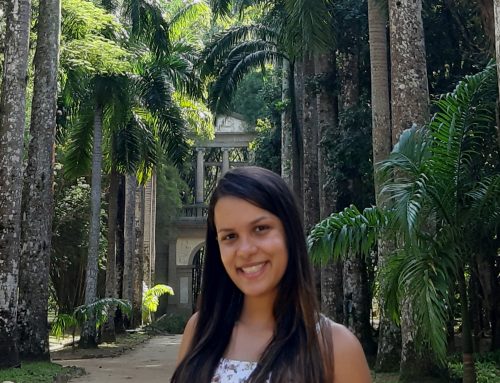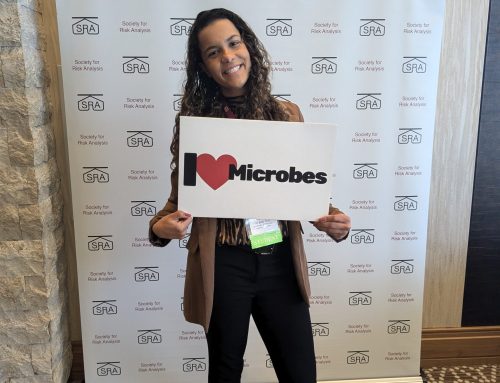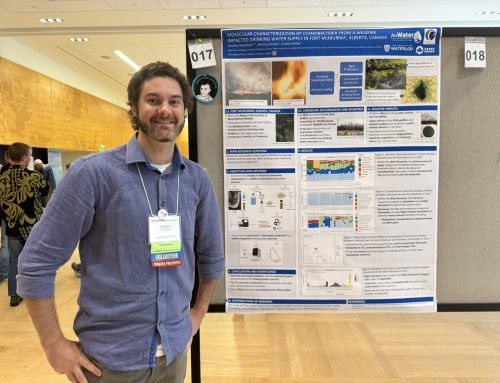Original article from the Water Institute‘s WaterResearch publication
Accurate monitoring of cyanobacteria is important for watershed management, potable water production, recreational water use and water re-use. Cost effective, fast and reliable cyanobacterial cell identification and enumeration methods are thus much-needed, essential components of water quality monitoring programs.
In recent decades, human activities and climate change have led to more frequent cyanobacteria occurrences in surface waters. Cyanobacteria often lead to excessive growth and/or potentially harmful blooms which can threaten human health. As a result, many jurisdictions have introduced specific water quality regulations to protect public health and safety. Routine monitoring, however, is both expensive and challenging, and typically involves sending samples to labs for manual analysis by technicians, which can take up to two days to complete. Indirect quantification methods that have been developed often require expensive equipment not usually found in water quality laboratories.
In this study, we present a novel imaging-based method as proof-of-concept for the rapid and accurate identification and enumeration of cynobacteria with conventional equipment available in typical water quality laboratories.
Methodology
In this study, a two-phase model-driven method of automated enumeration was developed to quantify the cell concentration (i.e. cells/ml) of two representative species of freshwater cyanobacteria: Microcystis aeruginosa and Anabaena flos-aquae. Fluorescent light was used to excite the natural photosynthetic pigments in the cells for contrast enhancement. A probabilistic unsupervised classification approach was used to distinguish the target cells from their surrounding background. In Phase 1, quantitative information associated with individual cells (e.g. dimensions and morphology) was analyzed and used for model calibration. In Phase 2, the quantitative information obtained in Phase 1 was used to separate the target cells from the background matrix and estimate their concentration.
An overall schematic of the enumeration process and numerical method is provided in Fig. 1.
 Figure 1: Schematic of overall process of image acquisition and analysis.
Figure 1: Schematic of overall process of image acquisition and analysis.
Outcomes
One of the major practical challenges for automated enumeration of cyanobacteria is the low and insufficient contrast between target cells and the surrounding background matrix. To overcome this technical barrier, specific wavelengths of light were utilized to excite natural photosynthetic pigments present in the cells, causing them to fluoresce and thus achieving contrast enhancement.
The model calibration process was the most critical step in the development of the proposed method.
It involved quantitative evaluation of the cellular characteristics of the cyanobacteria, including dimensions and morphological features, and delivered the baseline statistics needed for cell and bio-volume enumeration. Various sonication periods were tested to determine the optimum treatment time. Using two minutes of sonication, the estimated two-dimensional areas of the cyanobacteria cells were in agreement with commonly reported values, thus demonstrating the accuracy and efficiency of the approach.
In order to compare quantification results, cyanobacteria cells were enumerated manually using a hemocytometer as the reference, and indirectly using fluorometric probes, and by the developed method and images. The cell enumeration results obtained using the developed automated method closely corresponded to the reference measurements. Good linear relationships between the reference concentrations and the measured concentrations from the fluorometric probes were not observed. Notably, the developed method generally yielded smaller standard deviations than the other methods. Perhaps more importantly, the imaging-based nature of the proposed method inherently provides a lower limit of detection than use of a hemacytometer because larger sample volumes (i.e. enumeration areas) can be processed.
When several species of microorganisms are present, cell separation constitutes another challenge to using automated enumeration. To validate the accuracy of the developed method, mixed cultures at different volumetric proportions were prepared and tested. The results obtained using the developed enumeration method showed good correlation, and the determined volumetric proportions of different species were all in agreement with the theoretical values. These results show that the developed method can be used for both accurate cell enumeration and differentiation between Anabaena from Microcystis cells in a mixed culture.
Suspensions of Microcystis and Anabaena were diluted using untreated Lake Ontario water without any cyanobacterial cells. Results obtained with the developed method presented a strong linear correlation to the manual enumeration results for both cyanobacteria species. Compared with results using laboratory water, however, the enumeration results for cells suspended in lake water had higher variability, lower accuracy, and lower F1 scores. This is because unwanted fluorescent objects (i.e. debris, clay particles and microorganisms) with various shapes and morphology present in natural water may have interfered with the quality of the collected images.
Lastly, in order to test the developed method against cells with similar morphologies, cells of the green algae Ankistrodesmus were added to the cyanobacterial cultures. To evaluate the mixed culture containing cells with relatively similar morphologies, a more complex classifier was used. Using the dataset of either a Microcystis, Anabaena or Ankistrodesmus cell images, an exploration of different machine learning algorithms was first completed to identify the most effective method for identification. It was found that a Support Vector Machine with a quadratic kernel had the highest performance of 89.2% accuracy when classifying using five-fold cross-validation. As would be expected, the largest error of misidentification resulted from the morphological similarities between Anabaena and Ankistrodesmus.
Conclusions
The developed method demonstrates proof-of-concept that contemporary image analysis and processing technology has advanced to a level that enables the identification and enumeratation of cyanobacteria in a manner that is rapid, is at least as accurate, and is more sensitive, than currently available methods, and is achievable without requiring additional equipment beyond what is available in the typical water quality laboratory. Significant time and resources can be saved by using this type of method as compared to other cell enumeration methods in use for routine water monitoring. Notably, the concurrent analysis of Microcystis, Anabaena and Ankistrodesmus demonstrated that imaging-driven machine learning approaches can be used to accurately differentiate between microorganisms with relatively similar morphologies. This work underscores the promise of these techniques and the need for their further investigation to develop reasonably low cost, rapid screening tools for evaluating water quality and public health risk.
Jin, C., Mesquita, M.M.F., Deglint, J.L., Emelko, M.B., & Wong, A. (2018). Quantification of cyanobacterial cells via a novel imaging-driven technique with an integrated fluorescence signature. Scientific Reports, 8:9055.





